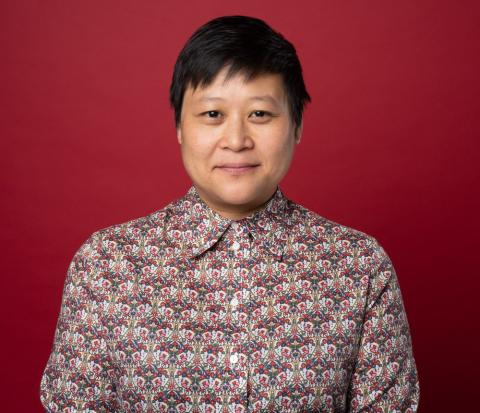-
Member Spotlight
- Administration for Community Living
- AmeriCorps Seniors
- Archstone Foundation
- Gary and Mary West Foundation
- Ralph C. Wilson, Jr. Foundation
- May and Stanley Smith Charitable Trust
- Michigan Health Endowment Fund
- National Council on Aging
- The Eisner Foundation
- The SCAN Foundation
- West End Home Foundation
- Ford Foundation
- The John A Hartford Foundation
Get to know Livia Lam, Program Officer with the Ford Foundation and member of the GIA Board of Directors

What is your role at the Foundation?
As a program officer, I lead the policy portfolio on the Future of Work(ers) team.
Can you tell us about the Ford Foundation and a few of its funding priorities?
The mission of the Ford Foundation is to reduce poverty and injustice, strengthen democratic values, promote international cooperations, and advance human achievement. To address inequality, the Ford Foundation works on the underlying structures, practices and beliefs that perpetuate inequality in its many forms - from economic inequality to inequality based on identity, to inequality of democratic participation.
Our Future of Work(ers) (FOW) program is focused on ensuring that all workers, regardless of their status, have equal rights to labor protections, that social protections are guaranteed to all, and that workers shape the policies and economic systems that affect their lives. On FOW, we work to build public will and reimagine labor and social policies based on worker priorities to make sure all work is valued and protected.
Ford is a private foundation that supports visionary leaders and organizations advancing justice, fairness, and human dignity around the world. Ford is one of the largest foundations in the world, with an endowment of more than $16 billion, and making more than $600 million in grants every year.
What are the current funding priorities in your portfolio and where do you fund?
I lead the policy portfolio, which aims to support new policies and regulations at the federal, state, and local levels that increasingly protect worker rights and advance social protections. Through my portfolio, we bring together actors across formal and more precarious forms of work in the U.S., including advocates, organizers, policy groups, and academics, to collectively shape 21st-century labor policies at the federal level and in some key state and local governments. We invest in implementation and empowerment to ensure that vulnerable workers understand their rights and have the power to access new programs.
How did you become involved with education, workforce and labor policy work?
I first became involved with education, workforce, and labor policy work when I served as legislative assistant for U.S. Senator Maria Cantwell, leading a portfolio that included the implementation of the Workforce Investment Act of 1998 (WIA) that governs the nation’s federal job training programs. Since then, I have served more than 10 years in Congress, most recently as U.S. Senator Patty Murray’s legislative director. As senior labor policy advisor for the U.S. House Committee on Education and Labor chairman George Miller, I was the key architect and champion of the Democratic legislative proposal to reauthorize WIA, which subsequently led to the successful passage of the Workforce Investment and Opportunity Act. I’ve also previously served in the Senate for the Health Education, Labor and Pensions Committee for Chairman Edward M. Kennedy and Chairman Tom Harkin, advising on economic issues including employment, income security, and health and safety policy.
As a resident senior fellow at several think tanks, including the Center for Work-Life Policy and the Learning Policy Institute, I conducted education and labor research. In addition, I led government affairs on federal labor and employment policy as deputy director for Intergovernmental Affairs in the U.S. Department of Labor under President Barack Obama and as senior manager of community and government affairs at the Service Employees International Union 775.
GIA has recently become more engaged in policy issues that impact all of us as we age, how do think our members can become more involved?
Support a diverse range of intervention aimed to build broad-based movements with an eye towards fundamentally shifting the priorities, power, and social norms that change the economic conditions for historically excluded groups.
What about GIA’s mission really motivates you?
As a new board member, I joined GIA because its mission toward a more just and inclusive world where all people are fully valued, recognized, and engaged at all ages aligns well with the Ford Foundation’s goals and objectives. I’m especially motivated to learn more about how GIA connects, collaborates, and co-funds coalitions and initiatives that explores strengthening the direct care workforce and institutionalizing direct care worker rights.
For some fun insight, can you share with us what you enjoy doing most when you’re not working?
I enjoy food shopping at our weekly neighborhood farmer’s market; dabbling in flower arranging; and spending the winter holiday in Paris with my spouse.